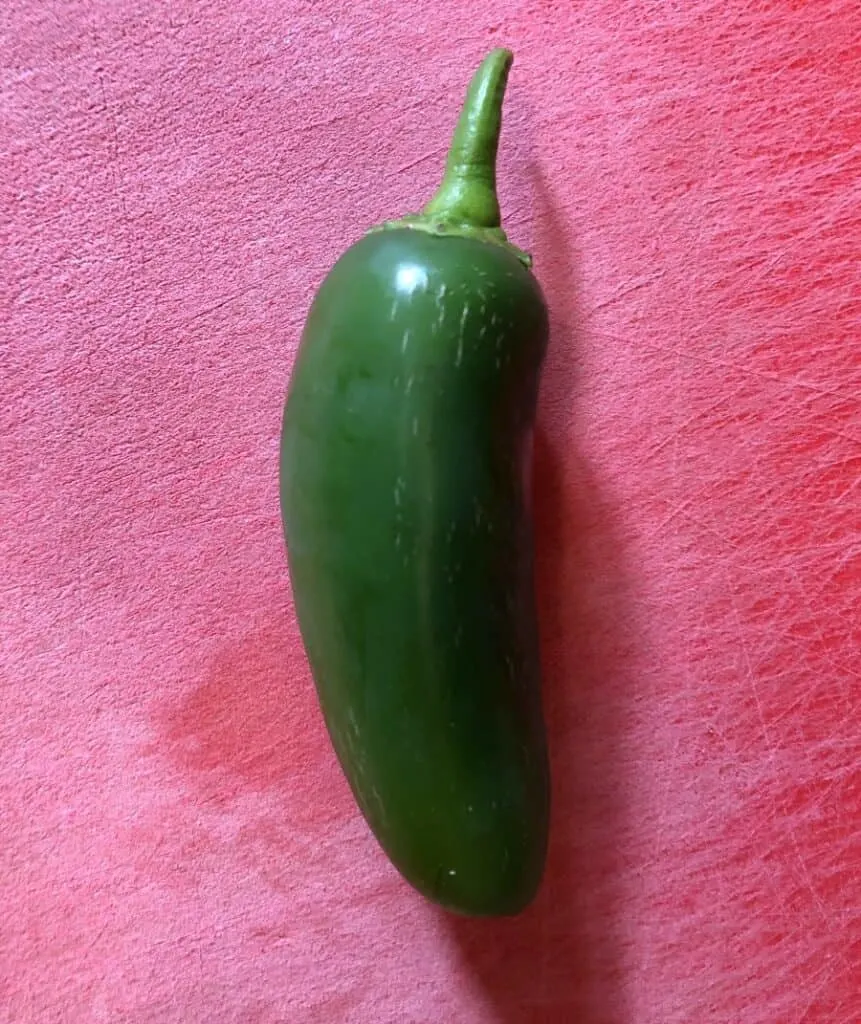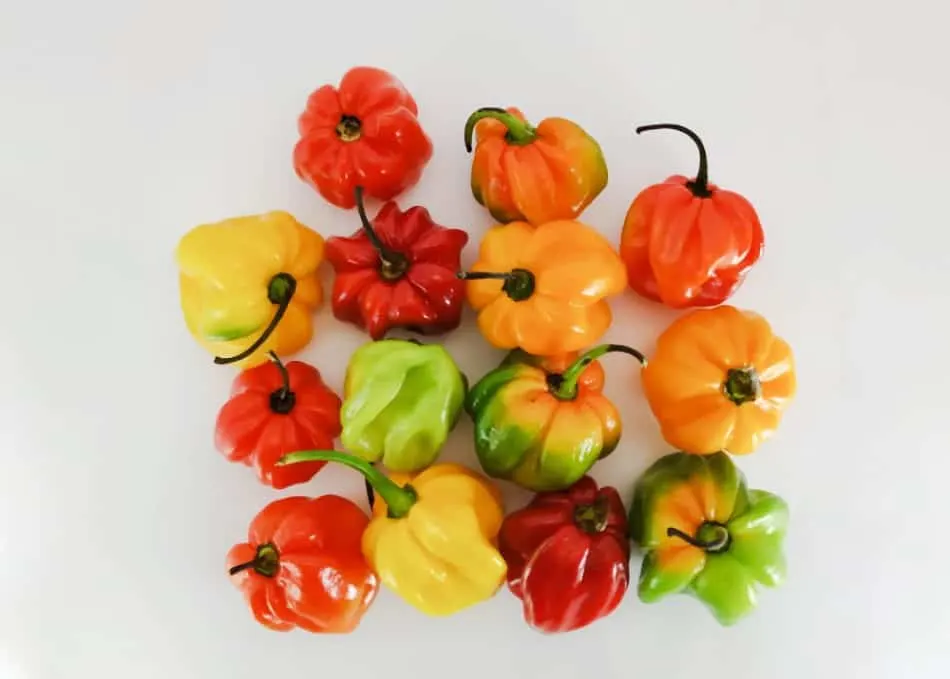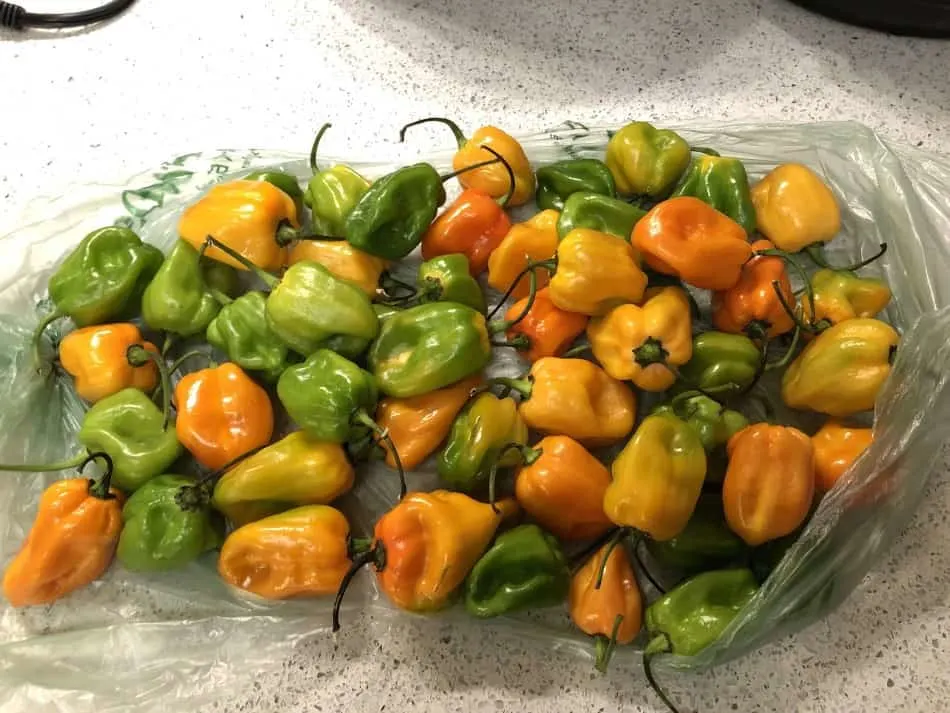If you love spicy peppers as much as I do, you’ll be curious to know what it takes to grow hotter peppers. Many tips and tricks exist on the subject, so I decided to do some research and boil it down to the most useful tips.
To grow hotter, a pepper plant needs to develop higher levels of capsaicin, the organic compound that makes peppers taste hot. To maximize a pepper’s capsaicin, considered the variety of pepper, climate, watering requirements, and fertilizer needs

There is no single trick to growing hotter peppers. Rather it is a combination of all of these aspects that will get your peppers to light your mouth on fire. Trust me, even perfecting a few of these tips will help you crank up the heat. Read on to find out how you can grow hotter peppers.
What Does it Take to Grow Hotter Peppers?
We talked about how much we need capsaicin to produce heat in peppers. Capsaicin is an irritant to us and when it reacts chemically with our sensory neurons in our mouths – look out! These “mouth blasting, sweat breaking” qualities are what give the peppers we love their “heat.”
To grow hotter peppers, you need to research a bit about the peppers you want to grow and how to encourage them to achieve their fiery potential, in terms of capsaicin levels. Then, you have to treat them right, to lead the way to higher Scoville units. The key factors to consider are:
- Variety of pepper
- Climate
- Watering requirements
- Fertilizer needs
Choose the Right Variety of Hot Pepper
First and foremost, you want to make sure you choose the right variety of pepper. There are thousands of types of peppers in the world, each with different levels of spiciness.
The spiciness of a pepper is measured by the Scoville scale. The heat is measured in Scoville Heat Units, or SHU. For perspective: pure, 100 percent capsaicin rings in at 15,000,000 SHU and is dangerous to ingest or contact directly. The following is a list of common peppers, ranging from mildest to spiciest:
- Bell (SHU-0)
- Mini Sweet (SHU-0)
- Cubanelle (SHU- 100-1000)
- Banana (SHU- 0-500)
- Cherry (SHU- 100-500)
- Poblano (SHU- 1000-1500)
- Jalapeño (SHU- 2500-8000)
- Fresno (SHU- 2500-10,000)
- Serrano (SHU- 10000-23000)
- Cayenne (SHU- 30,000-50,000)
- Habanero (SHU- 200,000-250,000)
- Ghost (SHU- 1,000,000-1,500,000)
Only certain peppers are naturally spicy. Make sure you choose a species that’s known to be hot. For something on the hotter end of the spectrum, try a Jalapeño, Fresno, or Serrano.

Pick the Right Spot for Your Peppers
Once you’ve chosen the right pepper, the next step is to decide when and where to plant them.
For hotter peppers, think hotter climate.
It’s no coincidence places like Mexico, India, and the Caribbean are home to some of the hottest peppers in the world. The abundance of sunlight and warm temperatures are perfect conditions for the growth of spicy peppers. Expose peppers to full sunlight for several hours a day for best results.
Peppers thrive in a soil that’s rich, loamy (consisting of a mixture of sand and clay), and well-drained. Soil with lots of organic material is preferred.
Don’t Overwater Your Peppers
For hotter peppers, when it comes to water, less is more. When you over-water your plant, the concentration of capsaicin gets diluted, which results in a less spicy pepper.
Depriving your plant of water will produce a spicier pepper.
As a rule, try only watering your plant when it looks droopy. It may seem counterintuitive, but don’t worry, you won’t hurt the plant! You’ll only encourage more capsaicin.
Fertilize Your Pepper Plant
Try fertilizing your plant with Epsom salt. Epsom salt contains magnesium, and sulfur—two crucial elements for the growth of peppers. Pepper plants are often deficient in these nutrients.
To add magnesium and sulfur to your pepper plant:
- Simply create a solution using one tablespoon of Epsom salt per gallon of water
- Use this to water the plant every three to four weeks.
- Alternatively, you can fill a spray bottle with the solution and apply directly to the leaves. Be sure the leaves are soaked thoroughly, and do this once a month.
Another important element for the healthy growth of your pepper plant is nitrogen. Nitrogen helps the plant grow a sturdy stem and full, lush leaves.
Choose a good, organic fertilizer with high nitrogen content. Pepper plants need more nitrogen in the early stages of growth. As they start producing peppers, less nitrogen is needed. For a great organic, nitrogen-rich fertilizer, try Espoma Organic Flower-Tone.
Additional Tips for Growing Hotter Peppers

Now that you have a good basic knowledge of how to get your peppers kicking, you might be wondering what else you can do to make them spicier. The following tips will bring you from hot pepper enthusiast to spice connoisseur!
Ripening a Pepper Plant
The average pepper takes around 70 days to reach full maturity. But for the hottest varieties, it can take up to 200 days to reach peak ripeness. Picking a pepper before it’s fully ripe is sure to result in a less spicy pepper.
How to Know When a Pepper is Ripe
Peppers are often picked while still green, but for those seeking hotter peppers, this is a mistake! Give it time, and your pepper will turn from green to a bright red, orange, or yellow.
Make sure you let the color change completely before harvesting. The hottest pepper varieties are a bright orange or yellow at full maturity. Maturation entails fuller flavor and peak spiciness.
How to Properly Pick a Pepper
When it’s time to pick the pepper off the vine, a little care will go a long way.
- Use pruners. Carefully snip the pepper from the branch.
- Be gentle. Don’t destroy the integrity of the remaining plant.
- Don’t cut too much. Modestly prune your plant to allow for continued growth.
If the plant continues to receive adequate food and water, it will continue to provide you with hot peppers long after the first harvest.
How to Stress a Pepper Plant
It may sound counterintuitive, but try stressing your plant to encourage them to grow hotter peppers. Bend and twist some of the stems and leaves of the plant. This will imitate animals and other wildlife who are natural predators to the plant, which triggers a defense response: the release of capsaicin. That response is meant to deter animals from eating the plant when they discover the spiciness. Waiting to water until the leaves become wilted will also aid in stressing the plant, and lead to a spicier pepper.
Common Reasons Homegrown Peppers are Not Spicy
If your peppers aren’t as spicy as expected, there are some common reasons for this:
Cross-Pollination
Growing a spicy plant next to a mild one can result in mixed results. Your hot variety can come out milder than usual, and your mild peppers can pack an unexpected kick.
If you’re growing different plants at the same time, be sure to plant them as far away from each other as possible.
Too Much Sun Exposure
Though plenty of sunlight is recommended, it’s also possible too much direct exposure can harm your plant. You’ll see the evidence of this on your plant’s leaves.
Sun scalding is a condition where peppers develop light-colored burn spots from too much sunlight.
The leaves of the plant provide natural shade for the peppers. When there aren’t enough leaves to protect the pepper, sun scalding occurs. To avoid this, make sure you’re watering the plant enough and providing enough fertilizer.
Too Much Water
Perhaps you simply treated your pepper plant too well! Over-indulging in watering your plant is a common culprit of milder hot peppers. Again, you want a high concentration of capsaicin, and too much water will dilute the amount, causing less heat.
Intense and prolonged periods of rain can also adversely affect your peppers’ spiciness. Hot pepper plants should not be treated the same as your other crops. For best results, only water enough to keep your plant alive. This will maximize the spiciness of your pepper.
Trust These Time-tested Tips for Hotter Peppers
There are several ways to effectively grow hotter peppers. It may be different than what you’re used to, or it may take a bit more effort. However, utilizing these techniques are sure to bring your peppers to the next level of flavor and heat.
Here are Some of my Favorite Gardening Products and Tools
Thank you for reading this article. I hope you found it helpful for growing some new plants in your home or garden. Here are some products I like that I hope you’ll also find helpful. These are affiliate links, and I am compensated for referring traffic. But in all honesty, these are the exact product that I use or recommend to everyone.
Soil: For high-quality soil, I really like Fox Farm Ocean Forest. I do all my growing in containers and this soil has worked great for me. I like how they use nutrient-rich contents like earthworm castings, bat guano, and composted crab and fish.
Fertilizer: Currently I am using a seaweed-based organic fertilizer call Neptunes Harvest. This is a great milder fertilizer option if you want to use something organic. If you want a more powerful fertilizer, I recommend Fox Farm Liquid Nutrient Trio, lots of people have had great growing success with this product.
Pruning Shears: Pruning shears are one of the most useful gardening tools to have because it’s important to prune your plants to keep them healthy. The pruning shears I recommend are the Gonicc 8’’ pruning shears. I like them because they are built sturdy and work both on bigger and smaller plants, so you don’t need to have multiple pruning shears.
spicytrio.com is a participant in the Amazon Services LLC Associates Program, an affiliate advertising program designed to provide a means for sites to earn advertising fees by advertising and linking to Amazon.com. spicytrio.com also participates in affiliate programs with other sites. spicytrio.com is compensated for referring traffic and business to these companies.
